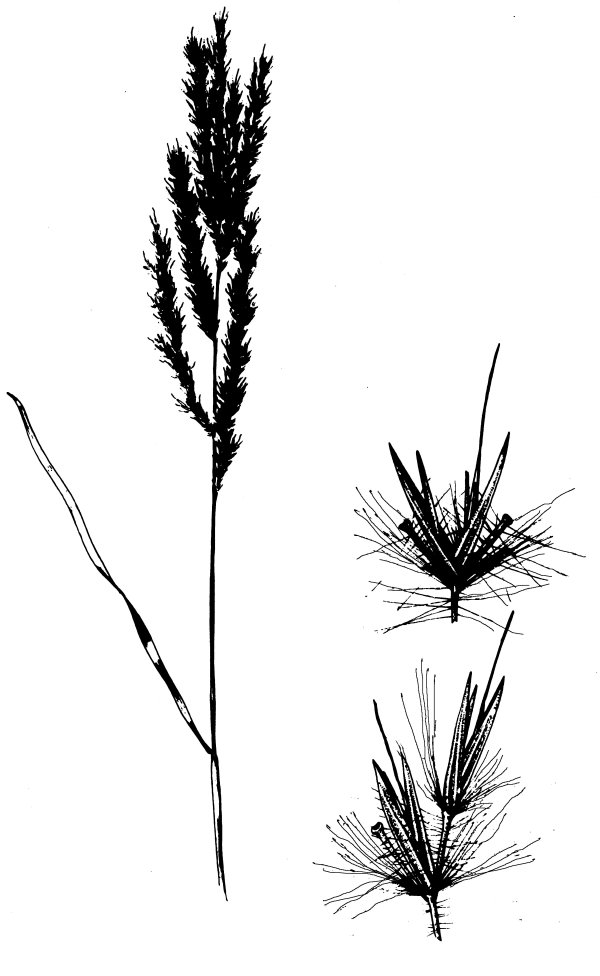
Erianthus ravennae (L.). Ravennagrass
Habit: Stout, tufted, perennial. Culms: Stout, up to 4 m. tall, as much as 15 mm. thick at the base, in large, dense clumps, glabrous or a few hairs near the nodes. Blades: Culm blades 30-80 cm. long, those of the sterile shoots 1 m. or longer, 5-12 mm. wide, flat above the middle, narrower, thick, folded and grooved towards the base, usually quite rough, long hairy on both surfaces near the base or above the narrowed portion. Sheaths: Longer than the internodes, usually rough, more or less densely hirsute or hispid, more or less papillose. Ligule: About 1 mm. long, minutely ciliate. Inflorescence: Terminal, oblong, densely silky, silvery-brown panicle, 20-40 cm. long, the branches closely appressed, with numerous branchlets each with several short sessile racemes, the rachis-joints and pedicels villous and about half as long as the spikelets. Spikelets: 4.5-5 mm. long, densely villous at the base, the hairs as long as or slightly longer than the spikelet, spikelets all alike, in pairs along a slender axis, one sessile, the other pedicellate, the rachis disarticulating below the spikelets, the rachis joint and pedicel falling attached to the sessile spikelet. Glumes: Coriaceous, equal, both 3-nerved, lanceolate, awn-pointed, often 2-toothed, usually more or less pilose. Sterile lemmas: About three fourths as long as the glumes, hyaline. Fertile lemmas: About three fifths as long as the spikelets, hyaline, 3-nerved, the midnerve extending into a slender terete awn, 3-5 mm. long, or awnless. Palea: Shorter than its lemma, hyaline, ovate, acute, 2-toothed. Habitat: An outstanding ornamental cultivated grass. Kansas Range: Throughout. Synonyms: Saccharum ravennae (L.) L. Erianthus ravennae (L.) Beauv. var. purpurascens (Anderss.) Hack.